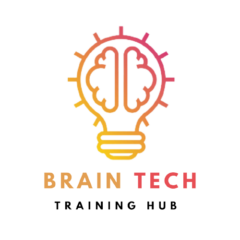Hardware and Networking course beginning with an overview of the course curriculum, we delve into topics ranging from the fundamentals of computer hardware, including CPU architectures and storage devices, to the intricacies of network configuration and cybersecurity essentials. With hands-on learning experiences in hardware assembly, troubleshooting, and network administration, the course equips participants with practical skills to tackle real-world challenges. From mastering the OSI model to implementing robust security measures, the syllabus covers a diverse array of subjects designed to cater to both beginners and seasoned professionals. Join us as we uncover the lucrative career opportunities and invaluable insights awaiting those who embark on this educational journey.
What is Hardware and Networking?
Hardware: The Backbone of Computing
Computer hardware encompasses all the physical components that make up a computer system. From the processor and memory modules to storage devices and peripherals, hardware forms the backbone of computing infrastructure. Understanding hardware is crucial for troubleshooting issues, upgrading systems, and optimizing performance.
Networking: Connecting the World
Networking, on the other hand, revolves around the interconnection of multiple computing devices to facilitate data exchange and resource sharing. It involves various components like routers, switches, cables, and protocols, working together to create robust communication infrastructures. Proficiency in networking is vital for building, maintaining, and securing modern-day computer networks.
Why Pursue a Hardware and Networking Course?
- Lucrative Career Opportunities: The IT industry is constantly evolving, creating a high demand for skilled hardware and networking professionals.
- Versatility: A strong foundation in hardware and networking opens doors to diverse job roles, ranging from network administrators to technical support specialists.
- Continuous Learning: Technology never stands still. Engaging in a hardware and networking course ensures you stay updated with the latest advancements in the field.
Exploring Course Syllabus of Hardware and Networking Course
A reputable hardware and networking course typically covers a broad spectrum of topics, catering to both beginners and experienced individuals. Here’s a glimpse of what you can expect:
- Introduction to Computer Hardware:
- Understanding computer components (CPU, RAM, hard drive, motherboard, etc.)
- Overview of peripheral devices (keyboard, mouse, monitor, printer, etc.)
- Basic troubleshooting techniques for hardware issues
- Operating Systems Fundamentals:
- Introduction to various operating systems (Windows, Linux, macOS)
- Installation and configuration of operating systems
- File management and system utilities
- Networking Basics:
- Introduction to networking concepts and terminology
- Overview of network devices (routers, switches, hubs, etc.)
- TCP/IP fundamentals
- Introduction to IPv4 and IPv6 addressing
- Network protocols (HTTP, FTP, DNS, DHCP, etc.)
- Network Infrastructure:
- Configuring and troubleshooting wired and wireless networks
- Understanding network topologies (star, bus, mesh, etc.)
- Introduction to subnetting and VLANs
- Network security principles (firewalls, encryption, authentication, etc.)
- Network Services:
- Introduction to network services (DNS, DHCP, FTP, HTTP, etc.)
- Configuration and management of network services
- Troubleshooting common network service issues
- System Administration:
- User account management
- File system permissions and security
- Backup and disaster recovery procedures
- Monitoring system performance
- Hardware Maintenance and Troubleshooting:
- Hardware installation and upgrading
- Diagnosing hardware problems
- Preventive maintenance techniques
- Hardware repair and replacement procedures
- Introduction to Cloud Computing:
- Overview of cloud computing concepts
- Cloud service models (IaaS, PaaS, SaaS)
- Cloud deployment models (public, private, hybrid)
- Emerging Technologies:
- Introduction to virtualization
- Basic concepts of containerization (Docker, Kubernetes)
- Introduction to IoT (Internet of Things)
- Overview of Cybersecurity Principles
- Practical Labs and Projects:
- Hands-on exercises to reinforce theoretical concepts
- Real-world networking and hardware troubleshooting scenarios
- Projects to implement and configure networking solutions
Benefits of Enrolling in a Hardware and Networking Course
- Hands-on Learning: Most courses offer practical labs and simulations to reinforce theoretical concepts.
- Industry-Recognized Certifications: Completing a hardware and networking course often leads to certifications from renowned organizations like CompTIA and Cisco, enhancing your credibility in the job market.
- Networking Opportunities: Interacting with peers and instructors fosters valuable connections that can aid in career growth and knowledge sharing.
Conclusion
Embarking on a hardware and networking course is more than just acquiring technical skills; it’s about empowering yourself with the knowledge and expertise to navigate the ever-evolving landscape of information technology. Whether you’re aiming for career advancement or simply seeking to broaden your horizons, investing in such a course is a step in the right direction. So, why wait? Dive into the world of hardware and networking today and unlock a world of opportunities!



